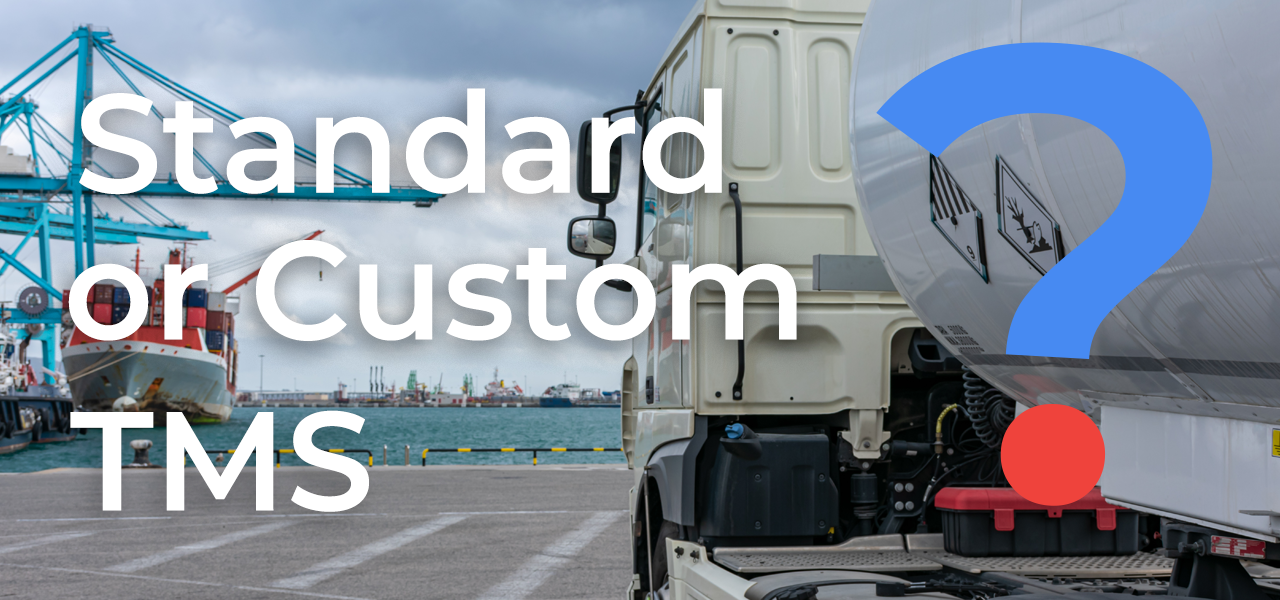Standard Transportation Management System (TMS) vs. Custom TMS. Top 6 questions answered.
Do you wonder whether a standard TMS like SAP or Oracle or a custom TMS is the best choice for you? Do you want to know the advantages and disadvantages of both options?
We have advised and actively worked with leading companies in the transportation industry for more than four decades. We know most questions decision-makers have.
In this blog, we will explain the key differences between standard and custom TMS. At the end of this article, you can decide what’s the best fit for your company.
1. What is a TMS?
A Transportation Management System is a software solution designed to optimize logistical operations. It automates repetitive tasks and reduces the likelihood of human errors. It provides tools and features to plan, execute, and track transportation. A well-designed TMS is a true money-saver. There are two types of TMS: standard TMS, like Oracle and SAP, and custom TMS, which is built from the ground up.
2. Which TMS Offers a Greater Competitive Advantage — Standard or Custom?
Most standard TMS uses best practices and industry standards. Well-configured it can make your operation more efficient.
A custom TMS, made precisely to your requirements, boosts the efficiency of your operations.
So which one gives the greatest competitive advantage? Since everyone uses the same types of standard TMS, it will not provide a competitive advantage. In addition, standardization favors the largest customer base. As a result, companies with specific or innovative needs, miss out on functionality. With a standard TMS, companies cannot differentiate and use their systems as a competitive advantage.
A well-built custom TMS, on the other hand, meets all the company’s needs. It contains the latest technologies and is an excellent basis for adding data-driven innovation. This will enable comprehensive data analysis for smarter decision-making, responsiveness to market shifts, improved customer experiences, and optimized operations. This difference gives custom TMS a competitive advantage over standard TMS.
3. Which one is better scalable: custom or standard TMS?
A TMS must be able to adapt to changing business needs. Whether it’s scaling up operations, expanding to new geographical locations, or integrating new solutions, a TMS should be able to adjust to the circumstances effortlessly.
Standard TMS solutions support the adding and removing of modules to cater to specific business requirements. The configurations can be adjusted to align with evolving needs. Vendors also provide updates and enhancements to their systems to improve scalability.
A custom TMS is scalable. It tailors to a company’s specific needs. It can be made with scalability in mind from the outset.
So is standard TMS scaleable?
Standardization has disadvantages. Commonly used features are integrated into a standard TMS, while less commonly used features are excluded.
But, since no company is standard, every company lacks functionality. In many cases up to 40%, based on our experience. The more specialized a company is the more functionality it misses. This functionality cannot be easily added because the original software architecture isn’t built for it.
The lack of functionality is often compensated for with manual work, which leads to wasted time and human errors. The lack of features and the difficulty in adapting TMS to new opportunities prevent a company from getting a competitive advantage and profitable growth.
Furthermore, standard TMS vendors spend a significant portion of their resources on standardization. This ensures that the TMS can be used by a broad range of customers with similar needs. But, this means that fewer resources are available for innovation.
Another thing is licensing. Standard TMS solutions offer different licensing tiers, each with its own user limits and specific features. Limited functionality, geographical restrictions, and customization options vary depending on the chosen license. Exceeding user limits or needing advanced functionality requires additional licenses or an upgrade to a higher-tier subscription, leading to high costs and vendor lock-in.
Overall, the combination of rigidness, lack of functionality, high license cost, and limited innovation capacity hinders scalability.
For a typical company, this may be fine, as standardization mainly benefits the largest customer group. Yet, it is a significant problem for specialized and innovative companies.
4. How Long Does It Take to Implement a TMS?
Implementing a moderately complex TMS can take 3-6 months. A larger and more
complex implementation involving a complex migration from a legacy application can take upwards of 9-12 months.
How fast a standard TMS can be implemented depends on how much it covers the company’s needs. And how complex the migration is. If limited customization and migration are needed it can be done relatively quickly.
A custom TMS can be implemented relatively quickly because configuring time is limited as the system is exactly built according to the company’s requirements. When logistics operations are complex and specific, a custom TMS will be faster to implement than a standard TMS.
5. How much do standard and custom TMS cost?
Regarding costs and benefits, it’s crucial to assess your needs upfront. Discovering later that more functionality or innovation is required can lead to significant problems. Not only is it complex to adapt a standard TMS, but it’s also very costly.
In general, a standard TMS is more cost-effective initially. It suits typical businesses with few special requirements and a limited need for innovation.
The costs depend on the fees charged by the integrator, the duration of the implementation process, and the number of consultants engaged in the project. A consultant costs between €100 – €300 per hour. There are extra costs for upkeep and adding apps.
A custom TMS incurs higher initial costs, but because it’s tailor-made, it ultimately delivers more value. This return on investment increases as the company becomes more specialized and innovative.
So, if your company has few unique needs and limited demand for innovation, a standard TMS is a good option. However, customizing a standard TMS is very costly. The same goes for surpassing the number of licenses as the company expands.
If unique processes are needed, and there’s a significant demand for a competitive edge and innovation, then a custom TMS is a better choice.
As mentioned before assess your needs upfront, a badly chosen TMS can be a heavy financial burden.
6. Can a standard TMS be customized?
A standard TMS offers many modules for various standard business processes. Data models, databases, reports, and dashboards are customizable. It is possible to integrate with external systems and applications.
A custom TMS is designed to meet the company’s specific requirements. It is completely customizable.
So both types of TMS can be customized. However, to add truly specialized and innovative features to a standard TMS, customizations need to be added alongside it. These adjustments need to be made by a consultant after each update. These updates sometimes bring unexpected changes. This is a lot of work, very expensive, and a financial disaster for many companies.
So a standard TMS can be customized. It’s a good choice for a typical company. But it’s better to choose a custom TMS if you need a specialized and innovative solution. It will save time and money.
Conclusion
The choice between a standard and custom TMS depends on your needs.
For businesses with relatively straightforward needs, a standard TMS is the right choice. These systems are designed to handle common logistics tasks with minimal complexity. They offer a balance of functionality and ease of use, making them efficient for tasks like route planning, shipment tracking, and basic reporting. A moderate complex TMS is cost-effective and can be implemented relatively quickly.
However, standard TMS solutions have their limitations. They lack the flexibility needed for specialized or innovative logistics processes. Customizing a standard TMS is complicated and a heavy financial burden.
On the other hand, a custom TMS is the best choice for businesses with complex or unique transportation needs. Custom TMS solutions provide the flexibility to tailor the system precisely to the specific needs. You can implement innovative features and functionality crucial for staying competitive and efficient. It can be implemented faster than a complex standard TMS, has a high return on investment, and is highly scalable.



